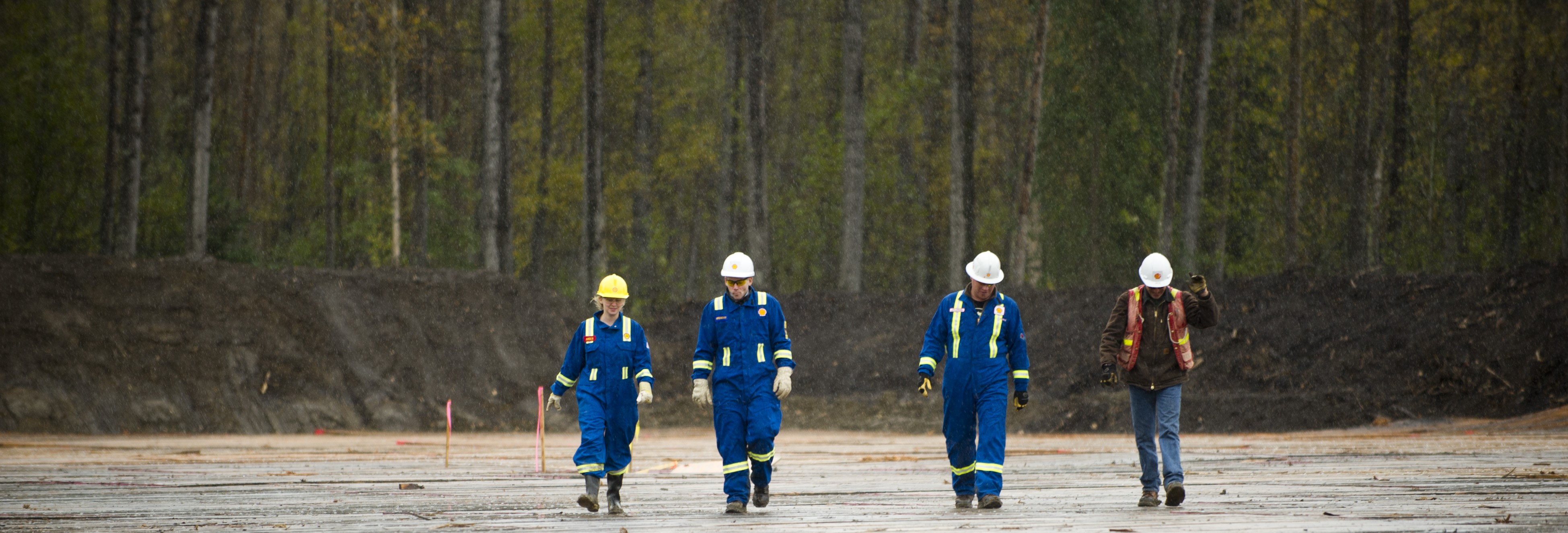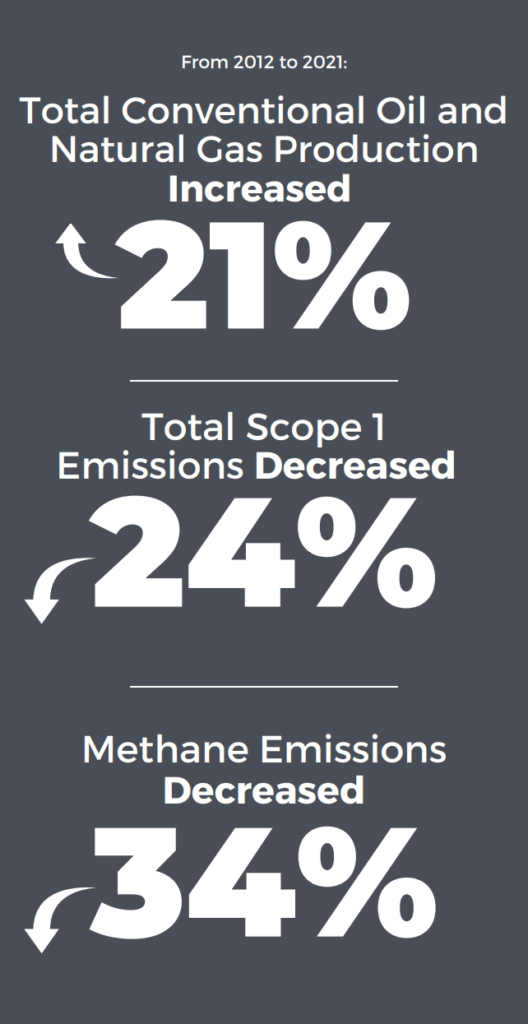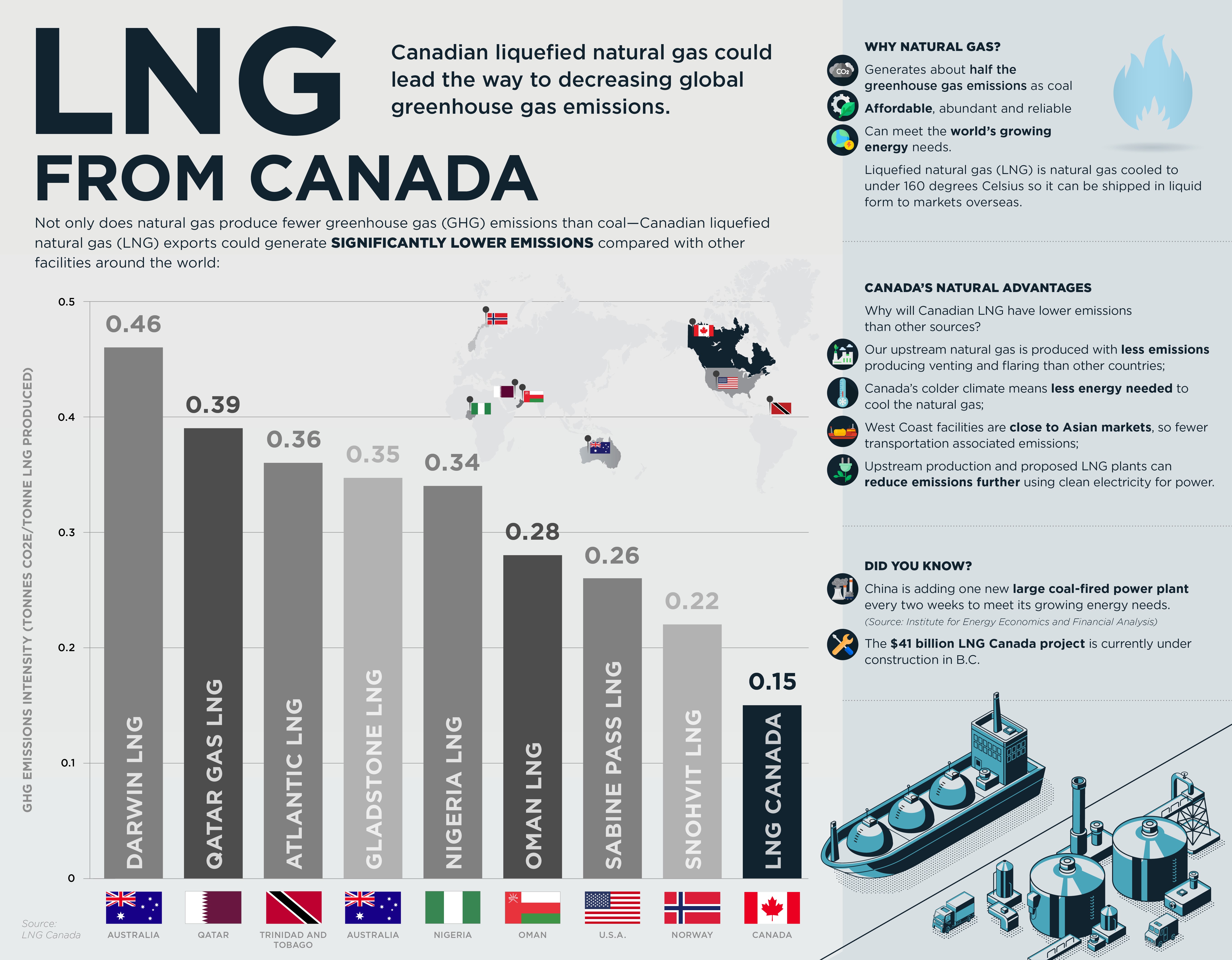Greenhouse gas (GHG) emissions include carbon dioxide (CO2), methane, nitrous oxide, and ozone, all of which can contribute to climate change. Most GHG emissions are released at the end-user stage when consumers burn natural gas and oil for heat, electricity, transportation, and other uses. However, the production of oil and natural gas also produces GHGs.
Reducing GHG emissions is a global challenge, and Canada’s oil and natural gas industry is committed to decreasing GHG emissions generated for each barrel of oil and cubic metre of natural gas produced. The challenge: to reduce GHG emissions while meeting the growing demand for energy in Canada and globally.

There are two ways to measure emissions:
- Emissions intensity: The volume of GHGs per barrel of oil or cubic foot of natural gas produced. New technologies and processes help to reduce emissions intensity. Lower emissions intensity is also an indication of improved operations efficiency, meaning more energy is produced while GHG emissions remain the same or decrease.
- Absolute emissions: The total volume of emissions.
Emissions are also divided into “Scope 1”, “Scope 2”, and “Scope 3” emissions. Scope 1 emissions are those released directly from oil and natural gas operations, while Scope 2 emissions are indirect emissions, such as emissions from a truck transporting water to a hydraulic fracturing site. Scope 3 emissions are those created by end-use consumers, such as exhaust from your furnace or vehicle.
Canadian producers have successfully lowered the carbon intensity of oil and natural gas, particularly in the oil sands, spending $1.4 billion annually on clean technology investment. (Source: Global Advantage Consulting Group)
Canada’s oil and natural gas industry accounts for 28% of the country’s total GHG emissions.

Globally, Canada’s share of GHG emissions is less than 1.5%.
According to the Government of Canada, Canada’s GHG emissions from all sources in 2021 totalled 670 megatonnes of carbon dioxide equivalent (MtCO2e). In 2021, the oil and natural gas sector accounted for 189 MtCO2e, or about 28% of Canada’s total emissions.
Emissions from conventional production account for about 47% of the upstream industry’s total, and 11% of Canada’s total. Oil sands emissions account for about 53% of the upstream industry’s total, and 13% of Canada’s total. The next largest sector is transportation, which accounts for about 22% of Canada’s total GHG emissions.
(Source: Environment and Climate Change Canada (Scope 1 emissions).)
The Canadian Association of Petroleum Producers released an analysis of Government of Canada production and emissions data. CAPP’s analysis shows Canada can grow production and the country’s role as a secure provider of energy while lowering GHG emissions. From 2012 to 2021:
- Conventional oil and natural gas producers in Canada lowered their absolute carbon dioxide equivalent (CO2e) emissions by 24% while growing total production by 21%.
- Natural gas production rose by 35% while CO2e emissions fell by 22%. In that same period, natural gas producers reduced methane emissions by 38%.
- Conventional oil production remained relatively flat (down 9%) with CO2e emissions from production dropping by 29%, demonstrating the work producers have done to lower their emissions intensity.
- Conventional producers have driven down methane emissions from total oil and natural gas production by 34% and methane emissions intensity by 46%.
The Pathways Alliance, an industry group representing 95% of oil sands production are working together, and with governments, on an ambitious emissions reduction plan to achieve net zero emissions from oil sands operations by 2050 using carbon capture, electrification, energy efficiency, and other technologies.
Conventional production will require a different approach because of the large number of small facilities over a large geographic area. The focus will be primarily on electrification, efficiency improvements, and reducing methane emissions.
Lowering emissions while growing production
Globally, Canadian liquefied natural gas (LNG) could help address climate change by displacing coal use in countries with growing energy demand, such as India and China, because burning natural gas emits 50% lower emissions than coal. (Source: America Geosciences 2022) Canadian LNG can be used in Asia-Pacific markets to displace coal-fired electricity generation, creating jobs and prosperity at home while reducing global GHG emissions.
Canada has high standards for the exploration, production, transportation, and use of resources — more so than most other natural gas and LNG-producing nations such as Russia and Qatar. Canada’s LNG is anticipated to be among the cleanest in the world. Minimizing overall LNG emissions starts with minimizing emissions from upstream natural gas production by switching the power source to operate compressors and other equipment from natural gas and diesel to electricity derived from hydro and other sources. Where possible, some producers have already made significant strides to electrify their upstream operations.

LNG can play a role in reducing global emissions
LNG isn’t just an economic opportunity for Canada. It can also play a major role in the global fight against climate change. This is because natural gas is cleaner burning – producing fewer emissions than coal.

